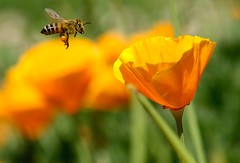
From time to time The B&B Team publishes articles we feel are relevant to the innkeeping community. Innkeepers often share information about their ever increasing number of guests with food allergies. This is a very popular thread on the PAII Forum. But what about guests with air born allergies? The following article by Elise Redmann addresses this issue with some great advise and workable tips. Read on.
It’s allergy season, and the recent surge in hypoallergenic lodging alternatives means that American lodging consumers, already more scrupulous than ever about spending their hard-earned dollars, are also less likely to tolerate anything but pristine conditions. The Asthma and Allergy Foundation of America estimates that 60 million people, or one in five, suffer from one or both conditions, but just one guest sacrificed to dust and mites is too many in any industry as competitive as inn-keeping.
The following tips are some of the easiest, and most necessary, to allergy-proofing your inn. It may be best, however, to contract a professional service Like Pure Solutions or Green Suites Hotel Solutions when hosting severely allergic or asthmatic guests. You can help keep everyone else sniffle-free with the following steps:
Dehumidify: Mold and dust mites are among the most common (not to mention unsightly) allergens, and both thrive in damp conditions. Invest in a dehumidifier and be sure to change the filter regularly, so that the machine itself remains free of potential irritants.
Decimate Dust: Dry dusting merely redistributes accumulated dirt and dust throughout the air; use a damp duster instead. Blinds and shutters are more hygienic than curtains, which trap dust and mites in their folds. Installing or refurbishing hard flooring, whether wood, tile or synthetic, will also make rooms easier to clean and less hospitable for mites; if carpet is inevitable, a vacuum with a high efficiency particulate air (HEPA) filter will help cleanse the air of minute particles. Non-HEPA filters can actually trigger allergy and asthma attacks by recirculating dust throughout the room.
Clean Green and Fragrance-Free: Earth-friendly and fragrance-free detergents and cleaning products are far less likely to irritate sensitive skin than conventional products, and green housekeeping is attractive to an increasingly broad market demographic. Just don’t go overboard: flowers and plants themselves can trigger hay fever, and the water necessary for their upkeep humidifies the air.

Be Superficial: Encase pillows, mattresses and comforters in hypoallergenic covers made from densely woven microfibers that prevent dust mites from passing from pillow to skin. Launder everything at a minimum temperature of 140° F to kill mites. For a truly pristine environment, bacteriostatic sprays can shield the most sensitive guests from all surface irritants and allergens.
Clear the Air: Severely asthmatic and allergic guests may require medical-grade air purifiers to eliminate all potential pathogens, while heating and cooling systems should be regularly maintained and disinfected. Smoking should be verboten and pets should be forbidden when possible: smoke permeates every surface it touches and lingers far longer than it is visible, and it takes 30 days and other purifying measures to remove all pet dander and pet-born allergens.
Elise Redmann writes about hotel management and hospitality for U.S. News University Connection. You can follow her on twitter @EliseRedmann
Thank you Elise. I believe that innkeepers could easily implement some of these practices. Following through to make sure your guests are informed of your efforts is essential. List your practices on your website, blog, Facebook, confirmation letter, guest information book…spread the word. Clean and green!
Thanks for Listening
Janet Wolf





